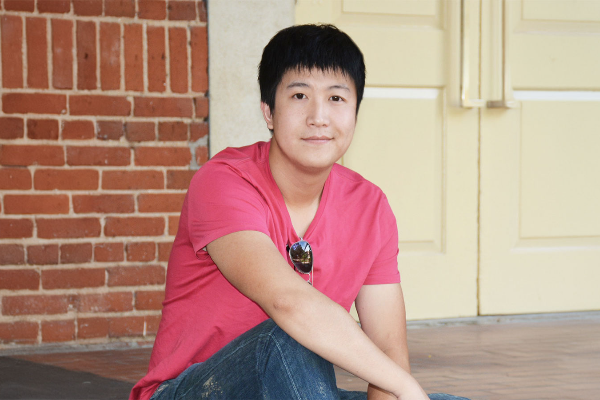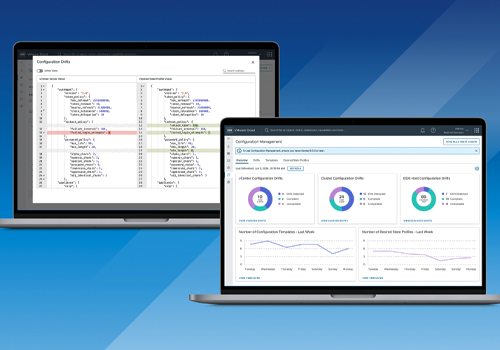
Bing Wu
1. Please give us a brief bio of yourself and your background.
I’m a Product Design Lead at VMware with more than 10 years of experience in the tech industry. I earned my Master’s Degree from NC State University’s College of Design and specialize in crafting intuitive, impactful user experiences.
Throughout my career, I’ve worked across diverse areas such as enterprise software and AI-driven solutions, consistently prioritizing user-centric design and cross-functional collaboration. I’m passionate about tackling complex challenges and designing products that improve usability and functionality.
2. What made you become/why did you choose to become a product designer?
I became a product designer because of my passion for problem-solving and enhancing people’s interactions with technology. Creating intuitive, user-focused designs that positively impact lives is deeply rewarding for me.
I love the combination of creativity and functionality in design, and transforming complex challenges into simple, user-friendly solutions keeps me motivated every day. The potential of well-crafted products to significantly improve user experiences fuels my excitement for this field.
3. What does “design” mean to you?
For me, design is primarily about addressing problems in a natural and intuitive way. It’s not merely about aesthetics; it’s about crafting experiences that enhance people's lives. Whether simplifying a complex process or incorporating a small detail that adds delight, design involves understanding the user’s perspective and finding the most effective way to fulfill their needs.
4. What’s your favorite kind of design and why?
I’m passionate about designing user interfaces, particularly for intricate systems. It’s immensely satisfying to transform something that might seem overwhelming into a clear and intuitive experience.
It feels like solving a puzzle—finding ways to make a tool or system not only functional but also enjoyable to use. Additionally, witnessing the positive impact of a well-designed interface on someone’s daily work is incredibly rewarding.
5. To you, what makes a “good” design?
For me, a "good" design is one that feels seamless and unobtrusive. It’s intuitive and addresses the user's needs without requiring much effort from them. Effective design simplifies complexity, blending functionality with aesthetics, accessibility, and user feedback.
It creates an experience that is both practical and pleasant, ensuring inclusivity. When a design operates effortlessly and leaves a positive, lasting impression, that’s when I recognize its quality.
6. Describe your design style and its main characteristics.
My design approach emphasizes simplicity and clarity, with a primary focus on enhancing user experience. I strive to create designs that are clean and intuitive, where each element serves a clear purpose. Functionality is a top priority, ensuring users can accomplish their objectives with minimal effort.
Consistency is also key, employing a unified visual language that is both familiar and easy to navigate. Ultimately, I aim to blend aesthetics with practicality, producing designs that are both visually engaging and highly user-friendly.
7. Tell us about your design process.
My design process usually begins with thoroughly understanding the problem at hand. I start by collecting detailed information through research, user interviews, and data analysis. Next, I move into the ideation phase, sketching initial concepts and exploring various approaches.
Once I have some preliminary ideas, I create wireframes and low-fidelity prototypes to outline the user flow and basic layout. I then iterate on these designs based on feedback from stakeholders and users, refining the experience. As the design matures, I develop high-fidelity mockups, concentrating on visual details and interactions.
Collaboration is crucial throughout this process. I work closely with developers, product managers, and fellow designers to ensure the design meets technical requirements and business objectives. Finally, I conduct usability testing to validate the design and make any necessary adjustments before handing it off to development.
My approach is flexible and iterative, consistently focusing on the user's needs and incorporating feedback and collaboration.
8. Congratulations! As the winner of the 2024 NY Product Design Awards, what does it mean to you and your company and team to receive this award distinction?
Receiving the award is a significant honor for me. It acknowledges the hard work, creativity, and commitment I've invested in my projects. This recognition is a proud moment that inspires me to continue pushing limits and creating outstanding products that genuinely make an impact.
9. Can you explain a bit about the winning work you entered into the 2024 NY Product Design Awards, and why you chose to enter this project?
The project, VMware vSphere+ Configuration Management, is a transformative solution for IT administrators managing on-premises data centers. We concentrated on developing a standardized and automated UI process that enables admins to define, track, and address large-scale configurations from a single platform. Our aim was to streamline management, enhance security, minimize errors, and support scalability, ultimately improving the overall user experience.
I chose to pursue this project because it embodies my design philosophy of addressing real-world challenges with innovative, user-focused solutions. The utility patent filings in the US and India further affirm the distinctiveness and impact of our approach, making it a noteworthy project deserving of recognition. Winning this award not only celebrates the success of our design but also highlights the collaborative effort that contributed to creating a product that significantly enhances user workflows.
10. What was the biggest challenge with this project?
The biggest challenge was creating a user interface capable of managing the complexity of large-scale, on-premises data center configurations while remaining intuitive and user-friendly. We needed to find a balance between offering detailed, powerful control for IT administrators and keeping the interface easy to navigate and accessible.
11. What are your top three (3) favorite things about our industry?
Ongoing Innovation: The tech industry is continually evolving, with new tools, technologies, and methodologies emerging all the time. This constant stream of innovation keeps the work engaging and offers endless opportunities for creativity and advancement.
Meaningful Impact: Designing for technology involves creating solutions that can profoundly affect how people live and work. Seeing a product you’ve contributed to make a real difference in users' lives is deeply satisfying.
Team Collaboration: The tech industry relies on collaboration among diverse teams—designers, engineers, product managers, and others. This collaborative environment not only enhances creativity but also leads to the creation of comprehensive and effective solutions.
12. Where do you see the evolution of design industry going over the next 5-10 years?
Over the next 5-10 years, AI is set to transform the design industry by facilitating highly personalized user experiences, automating routine tasks, and providing deeper insights through predictive analytics.
AI-powered design tools will enhance workflows and spark innovation, while generative design will broaden creative opportunities. These developments will make design more efficient, adaptable, and impactful, pushing the limits of what can be achieved.
13. If you were a student entering this industry or an aspiring NY Product Design Awards submitter, what advice would you give them?
I recommend that students and aspiring designers concentrate on mastering user-centered design principles while staying curious about new technologies.
Build a diverse portfolio by working on various projects and seek feedback to keep improving. Engaging with industry professionals and participating in design communities can offer valuable insights and opportunities. Lastly, don’t hesitate to experiment and innovate—challenge traditional design norms to create impactful and distinctive solutions.
14. What resources would you recommend to someone who wants to improve their skills in the design industry?
To enhance design skills, consider taking online courses from platforms like Coursera or Udemy, reading key design books such as *The Design of Everyday Things* by Don Norman, and following design blogs. Join design communities on sites like Dribbble or Behance, listen to design podcasts such as *Design Matters*, and attend workshops or meetups. Gaining practical experience through real-world projects and design challenges is also essential.
15. Who has inspired you in your life and why?
Don Norman is a major source of inspiration for me in the design industry. His work, particularly his book *The Design of Everyday Things*, has significantly impacted my perspective on user-centered design.
Norman’s focus on developing intuitive, user-friendly products and his commitment to improving usability and accessibility align closely with my own values. His skill in explaining complex design principles in an accessible manner has greatly shaped my approach to addressing design challenges and emphasizing the user experience.
16. What is your key to success? Any parting words of wisdom?
My secret to success is maintaining curiosity and a commitment to ongoing learning. View challenges as chances for growth, seek feedback to hone your skills, and always keep the user’s perspective in mind.
Continue to experiment and innovate—real progress often arises from pushing limits and taking risks. Persistence and passion are essential; success frequently results from doing what you love and remaining dedicated to it.

